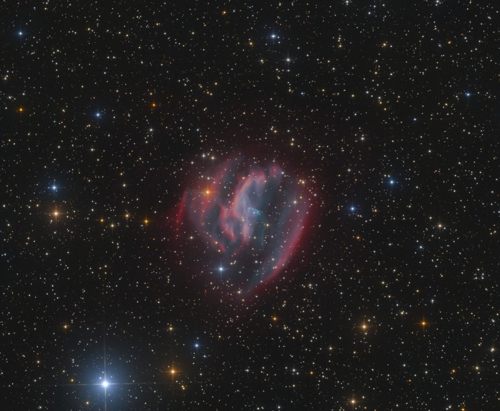

Object data
Object type:
Size:
Magnitude:
Constellation:
Distance:
Notes:

Exposure data
Date:
Location:
Telscope & Camera:
Mount:
Exposure time:
Exposure time total:
Notes:
Ursa Major obs. @ ROSA (remote observatory southern alps)
“Alkor”
Lacerta N25010c Newtonian, f/D = 4
SX Trius 694, Baader LRGB filter
10micron GM2000 HPS II
[OIII] 38x10 min / Ha 44x10 min
RGB 18x5 min per filter
18 h 10 min
data acquired remotely using CCD Commander
image acquisition and pre-processing by Markus Blauensteiner
the great image editing was done by Marcel Drechsler



- CEDIC Team goes Chile II
- CEDIC Team goes La Palma I
- CEDIC Team goes La Palma II
- CEDIC Team goes La Palma III
- CEDIC Team goes Namibia
- Namibia 2022 - Intro
- #1 - Clusters in Carina
- #2 - Hidden Treasures in Vela
- #3 - Southern Galaxies
- #4 - Emission Nebulae in Centaurus
- #5 - Near South Pole
- #6 - Dark Nebulae in Cir & Lup
- #7 - Nebulae in Ara & Norma
- #8 - Nebulae in Scorpius
- #9 - Open Clusters in Scorpius
- #10 - Highlights in Sagittarius
- #11 - Nebulae in Ophiuchus
StDr 137 (also EGB 9) in Canis Minor
Planetary Nebula (candidate)
~13’
---
CMi
2020-11-18+19+22+23 + 12-10+14 + 2021-01-10+11+07+18
(10 nights)

EGB 9 was discovered by Ellis, Grayson & Bond in 1984.
For a long time the well visible blue star in the center was considered
as the central star or as the star which brings the nebula
to emission. After its discovery and the "downgrading" as a
"normal" ionized interstellar medium EGB9 fell into a
36 years long slumber. It was not until 2020 that anything happened
again around EGB9. Xavier Strottner and Marcel Drechsler found
another suitable star (as central star) near the nebula center.
Its properties fit better to a PN-forming white dwarf, especially since
the "original" central star with ~8800 K is clearly too cold.
In the course of the long exposure outer shells could be detected,
so that the diameter of the nebula can be fixed with at least 13'.
Under the corresponding link above the positions of the "old" and "new"
central star can be compared.
Lionel Mulato made a spectrum of the nebula, which looks like the typical
spectrum of a PN. Also at the end of 2020 the first image of EGB 9
alias StDr 137 could be taken by me and processed by Marcel Drechsler.
From the current point of view it can be suggested that EGB 9 is a PN
and therefore can be used as a new, further designation StDr 137.
















